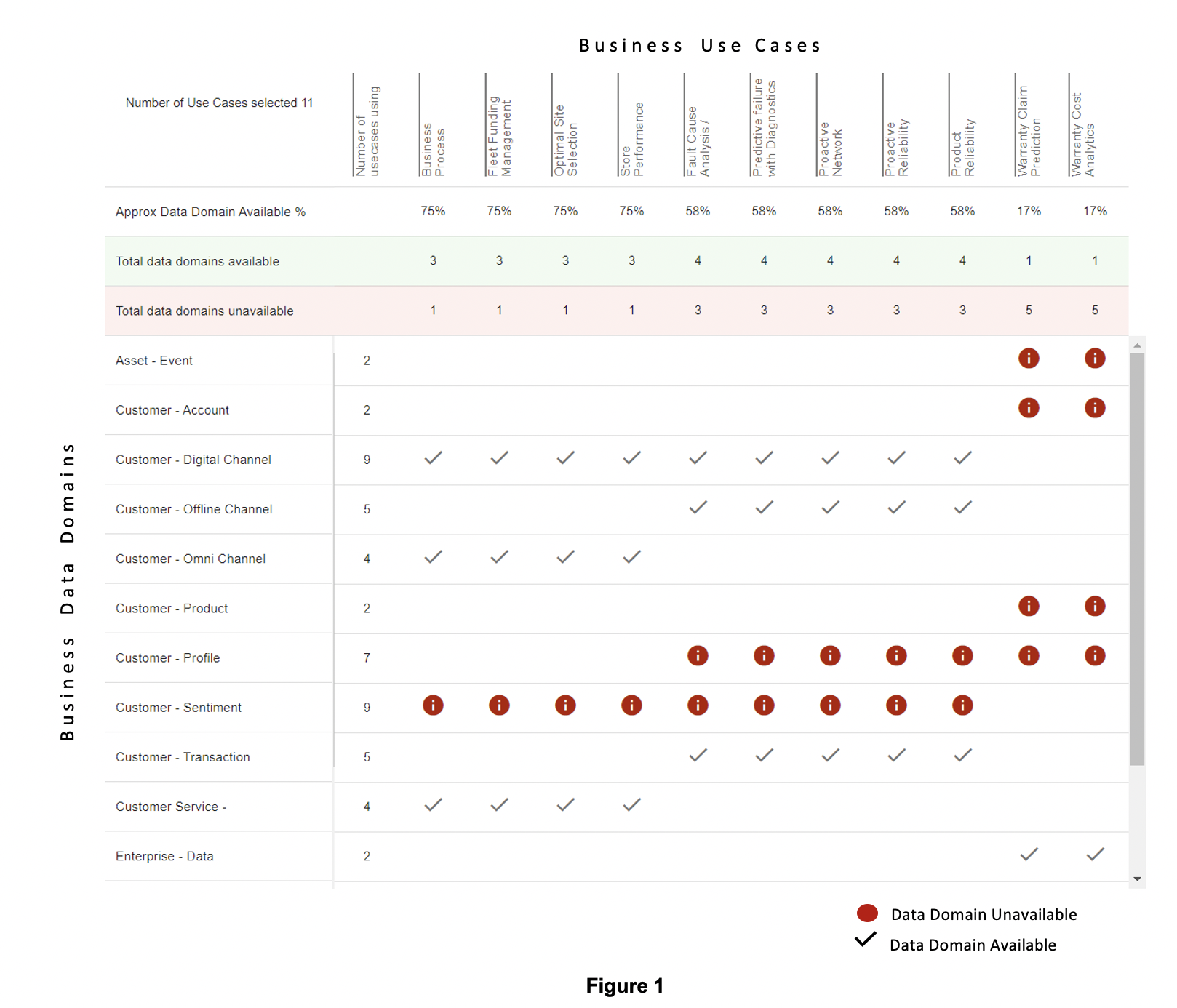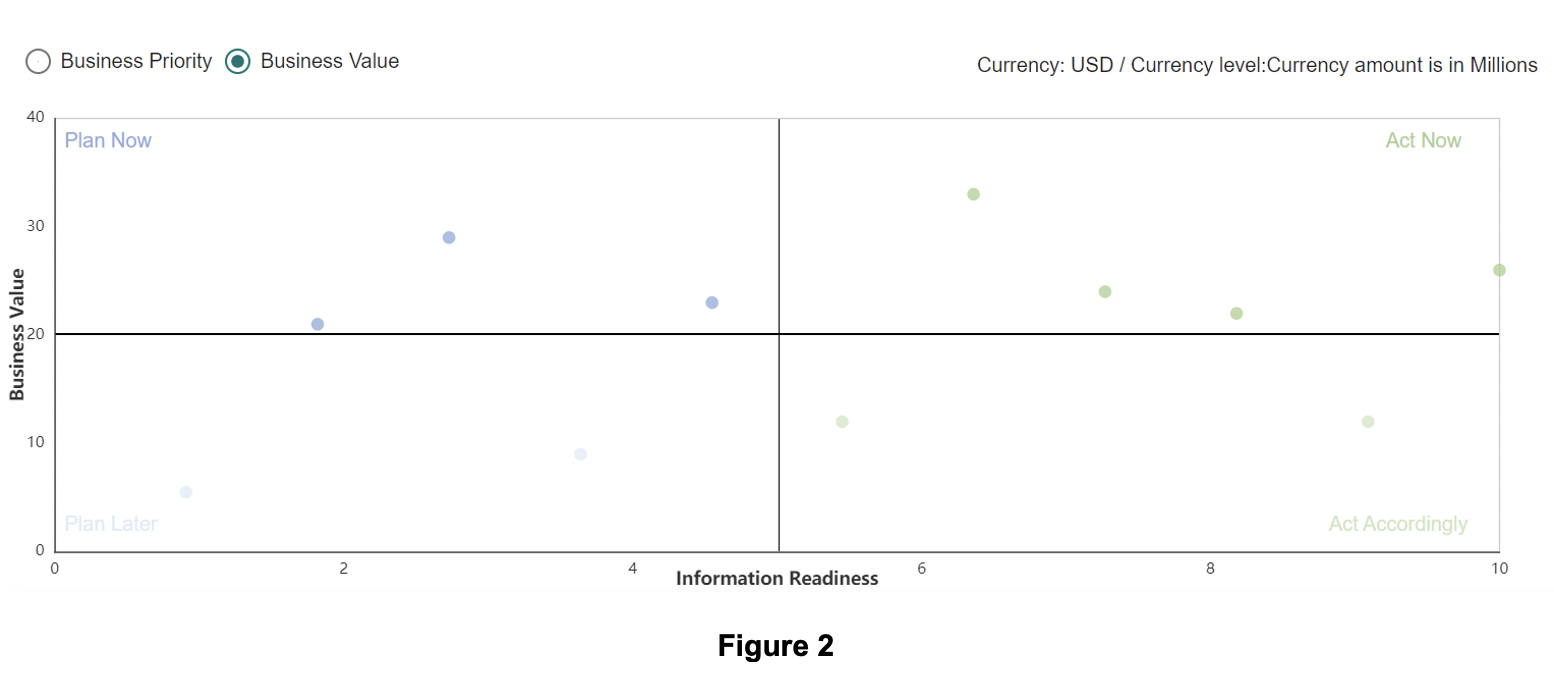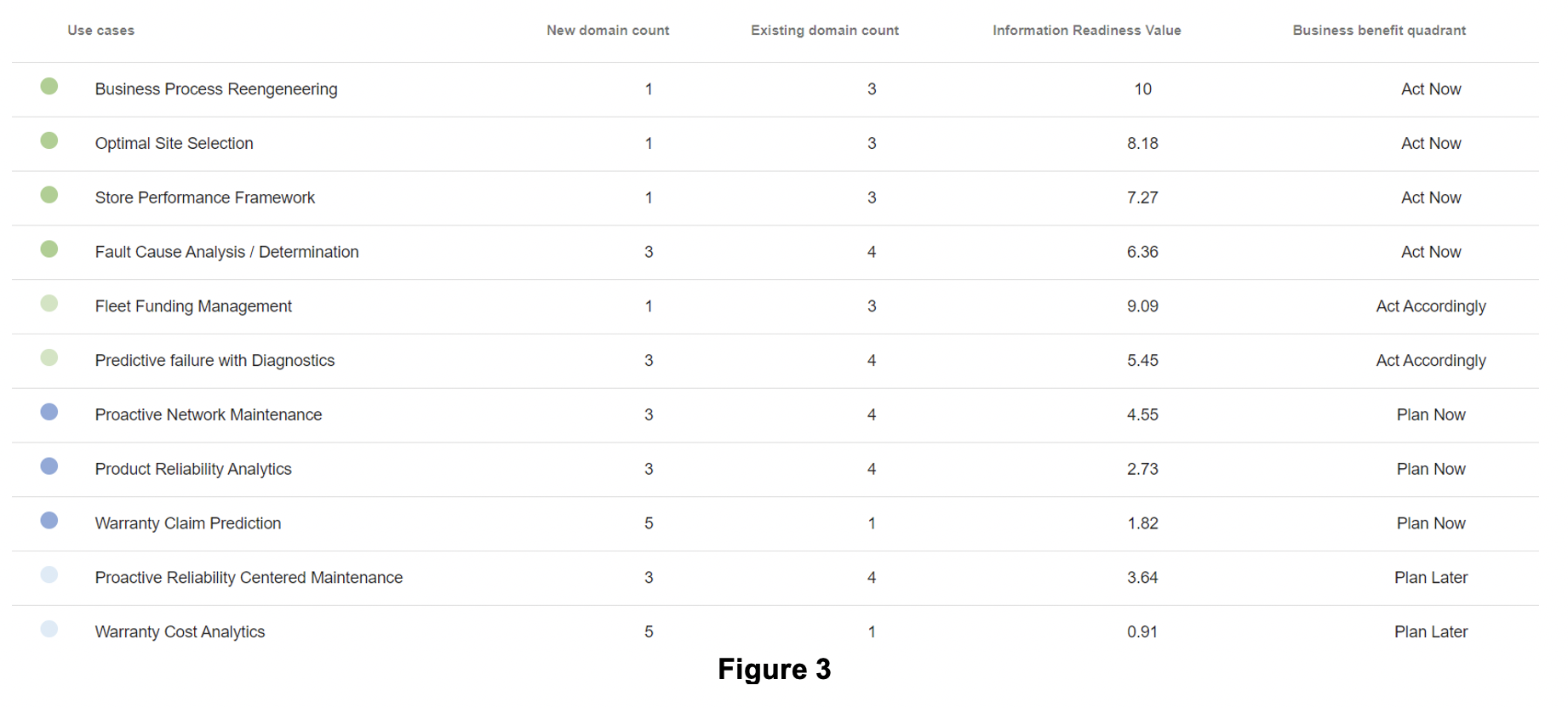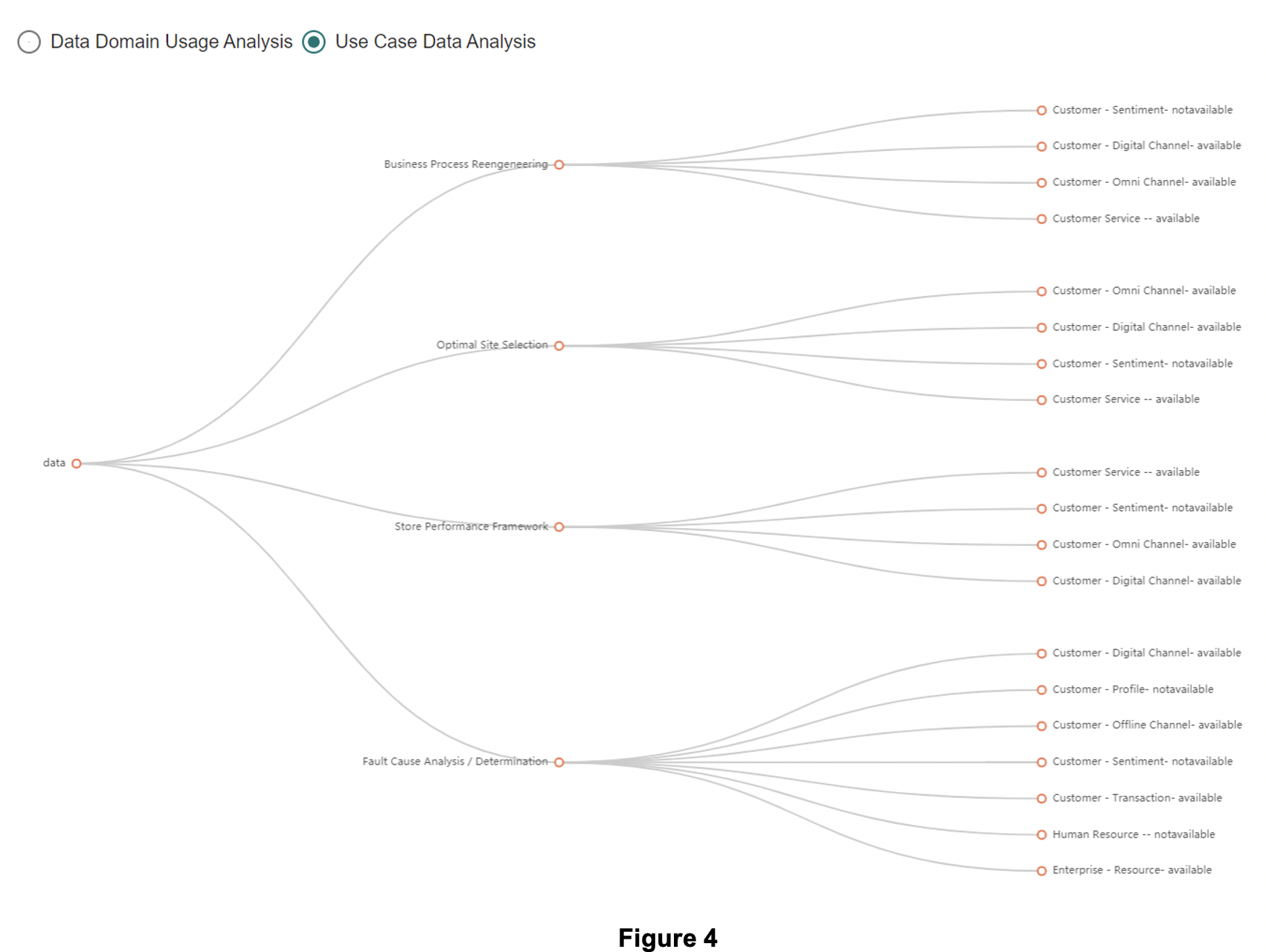Most organizations determine which corporate objectives will be approved and funded each fiscal year. These may be classified as revenue growth, cost reduction or regulatory/risk compliance. Departments responsible for delivering these objectives, then go about planning and executing them. Today, every corporate objective requires some type of BI and/or AI analytics. Often departments and project teams strive to solve their analytic needs independently. At first blush, it seems quicker that way. But inadvertently these efforts create technical debt, e.g., redundant and inconsistent data, poor data quality, exponential processing overhead and ultimately conflicting analytic outcomes.
Achieving speed to value and maintaining data quality seem to be diametrically opposed, but do they have to be? What if the analytic capabilities and use cases needed to meet the business objectives were already mapped to their required data domains? What if there was an easy way to systematically evaluate and keep track of your current and new data domains? What if these data sources were combined, enabling continuous prioritization based on both business value and information readiness?
Wow! That would provide insights and recommendations on how to implement the most valuable analytics with the least amount of effort first. But it would also enable prioritization of all analytic and data needs by maximizing data reuse, streamlining new data sourcing efforts and improving the quality of data for everyone.
With Teradata’s Business Value Insights (BVI), you can do just that! BVI enables you to browse and select analytics from Teradata’s vast repository of business functions, analytic capabilities and use cases, choosing those which best address your business objectives. These analytics are already mapped to standardized business data domains. BVI also enables you run probabilistic matching of data you currently have in Teradata Vantage to our standardized business data domains. The result is a grid of the analytics you’ve select, their data needs and the data you already have available to you (figure 1).

BVI then meshes this with your business priorities to provide insights and recommendations based on business value and information readiness. These recommendations are visualized in a 2x2 grid, i.e., Act Now, Act Accordingly, Plan Now, Plan Later (figure 2).
- Act Now quadrant consists of analytics with the highest business value and the fewest amount of unavailable (or newer) data domains to implement.
- Act Accordingly quadrant are analytics which have a lower business value, yet also have the fewest amount of unavailable data domains.
- Plan Now quadrant are analytics with higher business value but have more unavailable (or newer) data domains which need to be implemented.
- Plan Later quadrant are analytics which have a lower business value and, again, have more unavailable data domains to implement.

Additional information is provided for each of the analytics graphed above in the grid below (figure 3). The grid provides more information on the number of new data domains (unavailable), existing data domains (available), information readiness score and business benefit quadrant. Color coding of the use cases are again based on the four quadrants in the 2x2 graph (figure 2).

BVI enables deeper analysis to better understand which analytics have similar needs for the same data domains (figure 4). This is critical for eliminating the need for point solutions by ensuring data needs for multiple analytics are being considered when sourcing new or extending existing data domains. Understanding common data needs in the Act Now and Act Accordingly quadrants enable organizations to streamline the data sourcing effort, reduce processing overhead and ensure higher levels of data quality.

All organizations struggle with balancing their analytic business and data needs. Focusing on one over the other manifests itself in different ways, e.g., longer development cycles, more processing overhead and poor data quality, with each further contributing to increased technical debt.
BVI considers both business value and information readiness, maintaining a balance between business and IT needs. As use cases in the Act Now quadrant are implemented, they’ll move off the 2x2 graph (figure 2). The remaining use cases will begin sliding to the right. New use cases will be continuously added, of which some will have similar and different data domains needs. Teradata’s Business Value Insights approach enables continuous incremental business value while
maximizing data reuse and improving data quality.
To learn more about how to leverage BVI in your organization, contact your Teradata customer success manager.
Dwayne Johnson is a principal ecosystem architect at Teradata, with over 20 years' experience in designing and implementing enterprise architecture for large analytic ecosystems. He has worked with many Fortune 500 companies in the management of data architecture, master data, metadata, data quality, security and privacy, and data integration. He takes a pragmatic, business-led and architecture-driven approach to solving the business needs of an organization.
View all posts by Dwayne Johnson